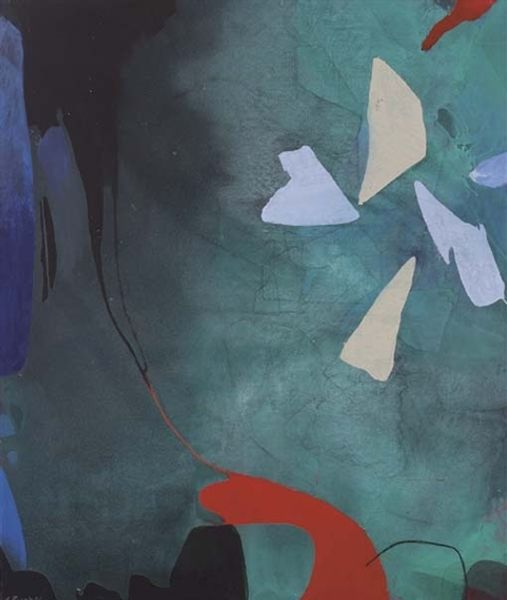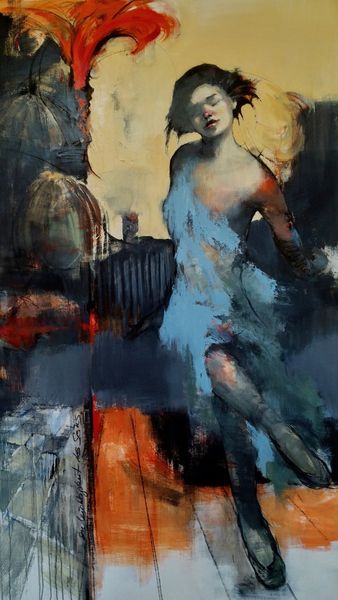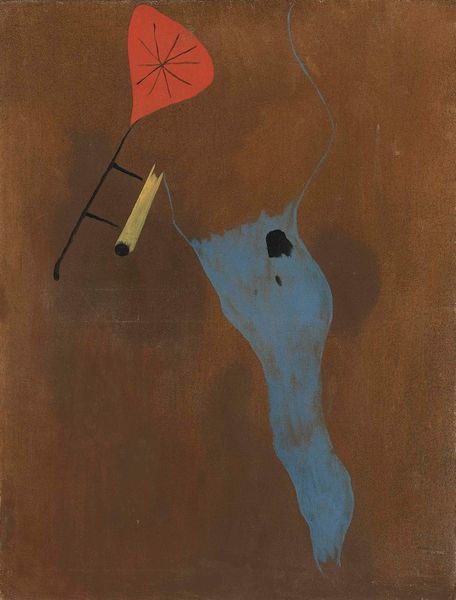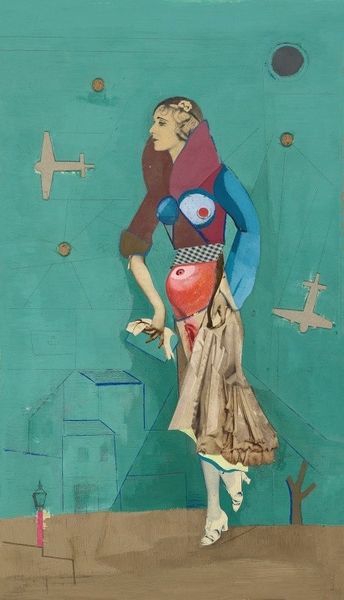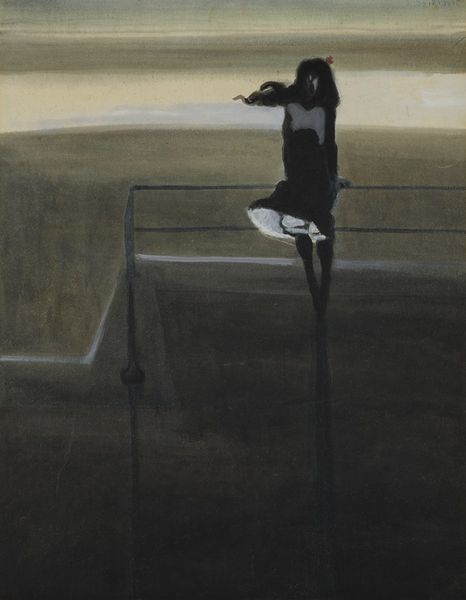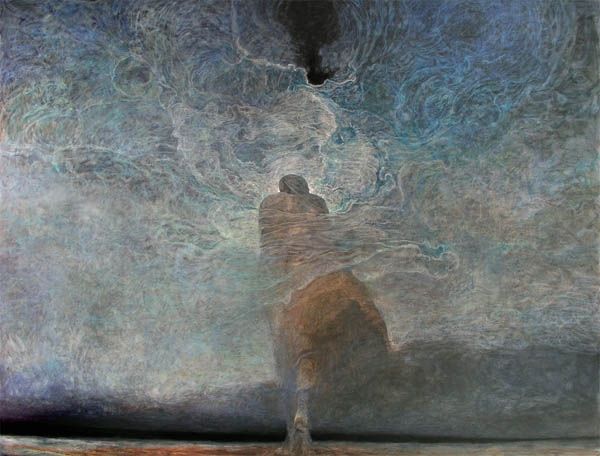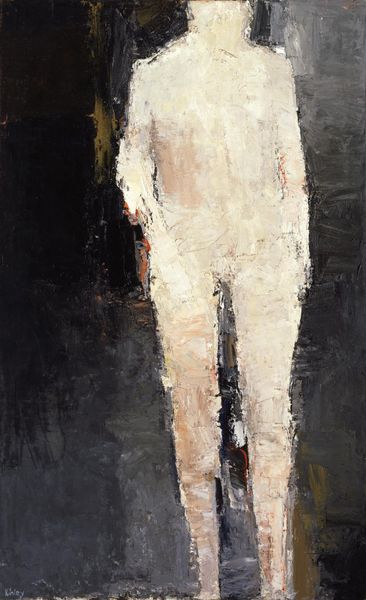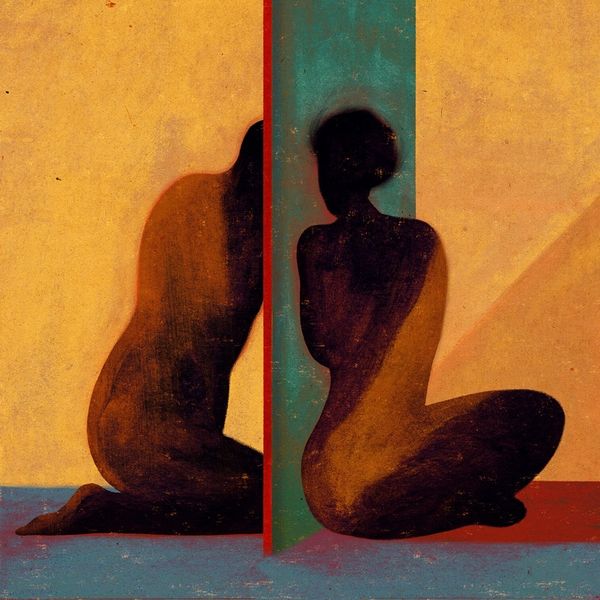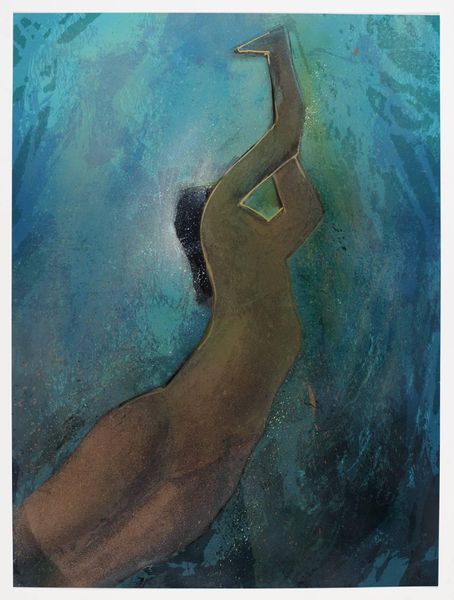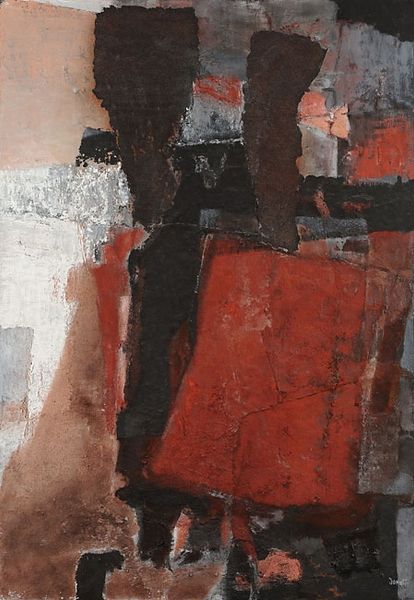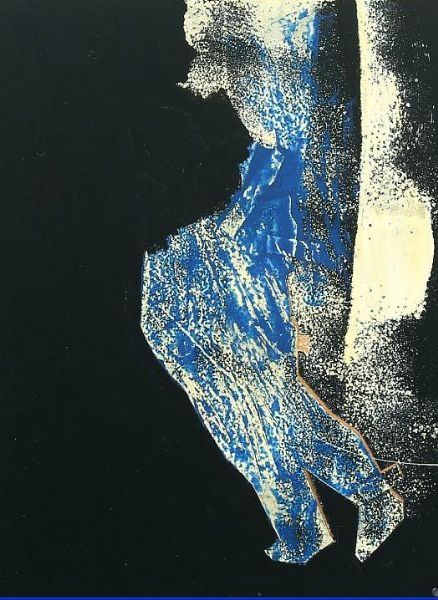
Copyright: Public Domain: Artvee
Karl Wiener created "Die Witwe," or "The Widow," at some point during his career as an Austrian artist. It depicts a woman in mourning dress standing next to a medieval tower against an eerie turquoise sky. Wiener's approach can be contextualized within the social fabric of interwar Austria. The starkness and emotional intensity of the image, combined with its simplified forms, echo the Neue Sachlichkeit movement, which sought a return to order after the turbulence of World War I. The image's combination of a woman in mourning, a medieval tower and the night sky may be a comment on tradition and loss. Wiener himself suffered persecution under the Nazi regime due to his Jewish heritage, which adds another layer of meaning to the work. To truly grasp the historical resonance of "Die Witwe," one might explore archives and exhibition records from Vienna during the 1920s and 30s, looking for the specific cultural associations of his imagery. Art's meaning always shifts according to its historical context.
Comments
No comments
Be the first to comment and join the conversation on the ultimate creative platform.
